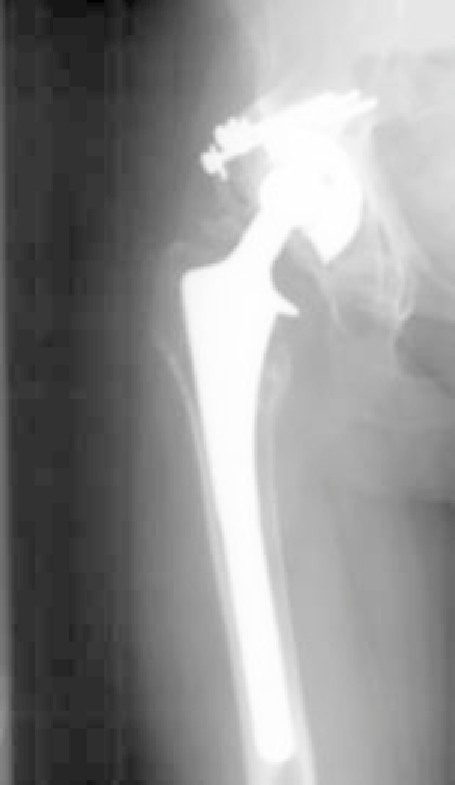Biomedical Engineering Reference
In-Depth Information
14.2 Incompatible Design Goals
for an Uncemented Hip Stem
In order to meet the goal of creating a clinically
successful, uncemented isoelastic stem, designers
must consider a number of requirements, including
those listed below:
l
Compliant form to reduce stress shielding
l
Should achieve sufficient “fit and fill” in order to
provide short-term stability and opportunity for
bony fixation
l
Coating compatible with bony ingrowth or
ongrowth
l
Durable materials
l
Compatible material
for bearing surface or
modular design
l
Biocompatible and chemically stable in vivo
l
Feasible to produce in commercial quantities at
an acceptable price.
Often, these requirements are conflicting and the
design must be optimized to achieve a balance. For
example, in many uncemented designs, it is often
considered desirable for the prosthetic to “fill” the
medullary canal with intimate contact between the
cortical bone and the porous surface (“fit”). This has
the theoretical advantage of providing initial stability
due to the tight fit while providing favorable condi-
tions for osteoconduction between the cortical bone
and the porous surface. In practice, however, there is
a wide degree of anatomic variation within the pop-
ulation and achieving true “fill” would require
a bulky implant in the proximal femur where the
medullary canal is larger. The resulting bulk of the
stem would lead to increased stiffness and is in direct
conflict with the requirement for a compliant stem.
Similarly, it has been demonstrated that there is
a direct conflict between the requirement for
a compliant stem to reduce stress shielding and the
requirement for interface conditions that foster stable
bone ingrowth at the interface. Reduction of stem
stiffness can lead to a marked increase in the interface
stresses at the proximal calcar (when bonded) or to
increased micromotion at this interface (when not
bonded;
Fig. 14.2
)
[6
e
8]
. As will be discussed below, it
is believed that debonding and creation of wear particles
at the proximal femur was the mechanism for clinical
failure of the Mathys RM Isoelastic (RMI) stem.
Figure 14.1
Radiograph of bone loss due to stress
shielding around a femoral stem. Note low cortical
density proximally and pedestal formation distally.
instrumental in achieving the goal of isoelasticity in
orthopedic prostheses.
This chapter summarizes the historical develop-
ment of isoelastic prostheses for total joint
replacement. The initial setbacks encountered with
early polymer
e
metal composites are reviewed to
provide the historical context for modern hip stems.
The development and clinical history of the Epoch
femoral stems, a pioneering implant of this class,
are summarized, along with other PEEK stem
designs. In addition to hip stems, the principles of
isoelasticity can also be extended to other ortho-
pedic implant designs. This chapter includes an
example of an innovative CFR-PEEK, compliant
acetabular component, engineered around the
concept of pelvic isoelasticity.


